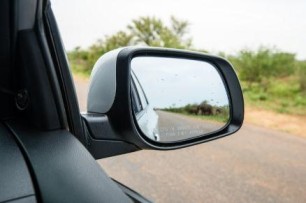General Insurance Blogs, Articles & Updates by - Magma HDI
Have us call you
- RENEW YOUR POLICY
- BUY NEW POLICY

Important tips for selecting the best engine oil for your car
Regular car maintenance is a worthwhile investment since it allows a vehicle to operate more effectively and safely. Moreover, it helps avoid the need for expensive repairs in the future. Changing the engine oil improves the performance of your engine by spreading heat and keeping an appropriate temperature in the combustion chamber. In addition, you must remember that a well-maintained car helps you secure a car insurance renewal easily with added advantages like no claim bonus.
It is critical to use the proper lubricant for your vehicle to achieve optimal engine performance. There are many types of car engine oils available, and determining which one is best for your car is not an easy task.
How do you know which engine oil is best for your car? Here are the things you must consider.
1. Oil Viscosity:
When it comes to engine lubricant or engine oil, viscosity is a measurement of the thickness of the oil and the resistance to flowing. It is necessary to match the oil viscosity to the ambient temperature since thick oil does not agitate around the engine. Optimal viscous lubricant promotes energy efficiency while also preventing friction between components. Look at the care guide for your car's oil needs.
2. Analyse the previous engine oil's performance:
One of the essential things you should do when changing your engine's oil is to assess how well the prior engine oil performed. Changing your engine oil at specified intervals is vital to ensure smooth performance and safety.
Suppose the previous engine oil was refined, and there was no need for engine maintenance. In that case, you can use the same oil and brand without hesitation. It's best to choose an oil with the same manufacturer certifications as the one specified in your car manual if you can't find the one you need.
3. Type of car you have:
The type of vehicle is the most crucial consideration when selecting engine oil. There are several important factors to consider when buying engine oil for your car, including whether it is old or new, if it runs on gasoline or diesel, and if it has a high-performance engine or not, the brand, the series, and so on.
4. Follow the advice of the manufacturer:
It is suggested to follow the manufacturer's guidelines for engine oil changes in your vehicle. The importance of these guidelines becomes much more apparent when you own a new car that is still covered by the manufacturer's warranty. Use only the engine oil recommended by the manufacturer during this period because using a different oil could invalidate the warranty and affect your car insurance renewal.
5. Environmental factors:
The choice of engine oil is influenced by whether or not the vehicle is subjected to high-temperature conditions. Choosing an engine oil that can handle low and high temperatures is essential when driving in harsh climates.
It is critical to choose the appropriate engine oil for your engine to run at peak performance. Furthermore, the proper engine oil will improve the engine's performance and the car's overall fuel efficiency.
It is highly suggested that car insurance renewal be done before the due date to receive uninterrupted insurance benefits for a prolonged time. So consider these five factors the next time you're shopping for engine oil to get the best results.
Click HERE to get your car insurance renewal done before expiry.
Disclaimer: The information provided above is for illustrative purposes only. To get more details, please refer to policy wordings and prospectus before purchasing a policy.

How to ensure maximum visibility by adjusting your car mirrors efficiently
Driving is a predominantly visual activity. Only learning the controls of the car is not enough. Good visualisation is one of the essential skills to develop when driving a car. Although you must concentrate on the road ahead, it is crucial to have a clear view of the sides and back of the car as well. Adjusting the side and rearview mirrors is vital to ensure a well-rounded view while driving.
Further, you should rely on emergency financial help by investing in dependable motor insurance India plans in case of road accidents, as it is always better to be safe than sorry.
All cars have blind spots; therefore, adjusting your rearview and side mirrors to the optimum can ensure maximum visibility and safety on the road. In this article, we tell you how to use your car mirrors efficiently and avoid the chances of accidents while driving.
1. Rearview mirror:
The rearview mirror, positioned next to the driver’s seat slightly above their eye level, is used to see the road behind and if any cars are approaching. The driver must adjust the rearview as per their height and comfort as soon as they get into the driver’s seat.
To adjust the angle of the mirror, sit up straight in a comfortable position, hold your head still, look into the rearview and shift it until the back or rear window is entirely visible in the mirror. Do this to avoid any blind spots. If more than one person is driving the same car, make sure to check the rearview mirror every time you get into the driving seat and readjust it to the best angle, in case it has been shifted as per another driver’s comfort.
When driving at night, flip the tab at the bottom of the rearview mirror that helps dim the light reflected by the headlights of the cars approaching behind you that may strain or blind you. In addition, some advanced car models enter and exit night mode to aid your visualisation.
2. Side mirrors:
Every car has a single side mirror on the left and right sides of the vehicle, respectively. As they are located outside of the car, it can be difficult to manoeuver them from inside. While many modern car models have levers or buttons that help adjust the side mirrors from the inside, some of them may not.
If your car does not have a lever or buttons to adjust the side mirrors, make sure to do so manually, right after you adjust the rearview mirror. Sit upright in the driver’s seat, first glance to one side, and adjust that mirror to an angle that helps reflect the side of the road. Shift it to a wide angle to get a comprehensive view of the side of the road. Repeat the same method for the mirror on the other side. If you have a lever or button inside the car, angle the side mirrors using it. The side mirror should provide a wide sideways view in just a simple glance.
The pro tip is to adjust the side mirrors to an angle that allows you to see right from the side of the road to the very back, including the approaching car, to maintain a safe distance.
Following these few tips to adjust the car mirrors can vastly improve your visualisation and assist you considerably while driving. It leaves very little room for errors or accidents. Apart from angling the mirrors, you must also check the wheel alignment, tyre pressure, oil levels, acceleration, and brake control to ensure safety before hitting the road.
Also, prioritise investing in motor insurance India plans and get the perks of financial coverage in case of loss or damages during accidents. Add value to your possession and get the best returns with assured safety.
Click HERE to know more about motor insurance India plans.
Disclaimer: The information provided above is for illustrative purposes only. To get more details, please refer to policy wordings and prospectus before purchasing a policy.

How mice threaten your bike and how you can prevent it
Indoor rodent infestations may have significantly reduced over the years; however, they still pose a threat outdoors. While we hear several stories about the damage caused by rodents and insect infestations in cars, we rarely hear about how badly they can damage two-wheelers.
Rodents, particularly mice and rats, are primarily attracted to areas where they can find ample warmth and hide. For them, bikes that have been stored away in garages for the long term make a perfect home. Although these mice usually take shelter in cars, bikes are a perfect warm spot for them, specifically in the winter months.
What are the threats caused to your bike by mice?
If you think rust is the worst thing that can harm your bike, you may be wrong. Mice and other such rodents can be far more damaging to your two-wheeler. From chewing on bike parts and wiring to building nests inside your engine, mice can cause terrible damage.
Mice are quick to chew into various parts of the bike, especially wiring. This can cause the engine and other parts to fail and is very difficult to fix. These damages incur high costs for the maintenance of your bike. In addition, it can be challenging to reach and repair the internal parts of the bike that have been damaged, causing unfavourable wear and tear in the process.
The nests created in internal parts of the bike are another major issue. Mice store food and other materials in the nests, which can clog the engine. They carry diseases and germs that can be detrimental to your health. If the nest is built near the air filter, there is a considerable danger of expelling rodent excrement every time you start the bike, leading to the spread of airborne viruses.
How to keep mice away?
Whether you are trying to get rid of the mice or are simply taking preventive measures to protect your vehicle, these few tips will go a long way in avoiding any more damage caused by rodents:
1. Mice try to find places that humans or other animals don’t regularly use. A stored bike in the garage or outdoors is one such place. The easiest thing to prevent this is to take the bike out for a ride frequently.
2. A simple mouse trap can help catch the ones that may be inside your vehicle. Keep the bike in a shed or enclosed area, set enough mouse traps around and underneath the bike, and check after a couple of days.
3. You can find many mice or rodent repellent sprays and medicines in local stores or online. Spraying these all over the bike will help chase away all the mice dwelling in and around the two-wheeler and prevent any more rodents from coming near it.
4. Block all mouse holes or hiding places in the garage where you store your bike. Making it a rodent-free zone is crucial. Avoid parking the bike in forested areas or lands with tall grass to avoid any future infestation.
5. Mice have a strong sense of smell and can be highly affected by it. Applying peppermint oil on tiny buds of cotton and placing them in various corners of the vehicle can help drive them away.
These tips may not undo all the damage caused to your vehicle, but it’s always good to be aware. So, be wise enough to have bike insurance so that you can recover the damage caused by mice. Also, if your bike insurance plan covers non-collision damages, you can easily file a claim.
Click HERE to get the best deals on bike insurance.
Disclaimer: The information provided above is for illustrative purposes only. To get more details, please refer to policy wordings and prospectus before purchasing a policy.

Plan to enrol your kids in these exciting activities and make the monsoon season enjoyable
The onset of monsoon is a gift for humans, animals, and plants. The lush greenery, the sweet smell of moist soil and the cold winds are a much-needed respite from the scorching summer months. But with all the monsoon goodness comes a set of challenges as well.
Children end up locked inside their houses, hoping for the pouring rain to go away. If you are a parent and you notice your kids growing increasingly impatient, this article is just for you. This article will look at all the activities you can enrol your kids in for a productive and fun monsoon season.
1. Take up a painting class:
Painting is an expressive art form. It is visually stimulating and allows your child to explore different colours and expression mediums. It gives your kids the opportunities to develop creatively and imaginatively.
This gives them the freedom to visualise and metaphorically paint the picture they want. You can help your children navigate the different types of famous artworks for inspiration. Later you can encourage them to join a painting class or workshops and learn to paint their imagination with passion.
2. Sports are always a yes:
In these distressing times of fast-paced technological advancement, we all have fallen sick and are easily prone to multiple health issues. Our bodies have become glued to the smart phones, and all you want is readily available with just one touch and tap of your phone. Rain can put a damper on your kid's physical activities.
Since being outdoors is a complete no-no, kids end up glued to screens. Indoor sport is your solution. Games such as table tennis, carrom, and chess are a few sports kids can play in the comfort of being indoors. Do not let rain be the reason your kids stay away from the fun.
3. Never say no to learning music:
Music, like painting, is again an expressive art form. The sounds stimulate your brain, which can then interpret different versions of tunes and rhythms. They help your child distinguish between various moods and emotions, thus enabling them to create their music. Notice how your kids pick up different notes from the song. Understand and encourage them to pursue various music skills and may also enrol in a music class.
4. We have all heard of abacus:
Abacus and mental maths tips and tricks will always be everyone's favourites. It doesn't harm learning quick tricks to help your child academically in the future. This enables the brain to enhance its analytical and logical power. Abacus classes can help your child improve their logical reasoning and make brisk calculations.
Ask your child if these activities interest them, and let them take the lead while staying indoors during the monsoon season. Parents must always focus on planning experiences to help their children be independent and happy. Don't let the rain wash out the excitement of your children. Monsoon can be fun, too, if activities are planned rightly.
Apart from the skills development, you should consider the plans for keeping the kids protected under any unforeseen circumstances which might arise during different walks of life. One of the best gifts your child can get is insurance benefits. As a parent, you must discuss your options and purchase the best general insurance for catering to your children's needs in the best ways possible.
Refrain from taking drastic decisions while buying general insurance. Take your time, do the best research, understand your child's requirements, and accordingly select the plan that is the best!
Click HERE to learn more about how purchasing general insurance.
Disclaimer: The information provided above is for illustrative purposes only. To get more details, please refer to policy wordings and prospectus before purchasing a policy.


